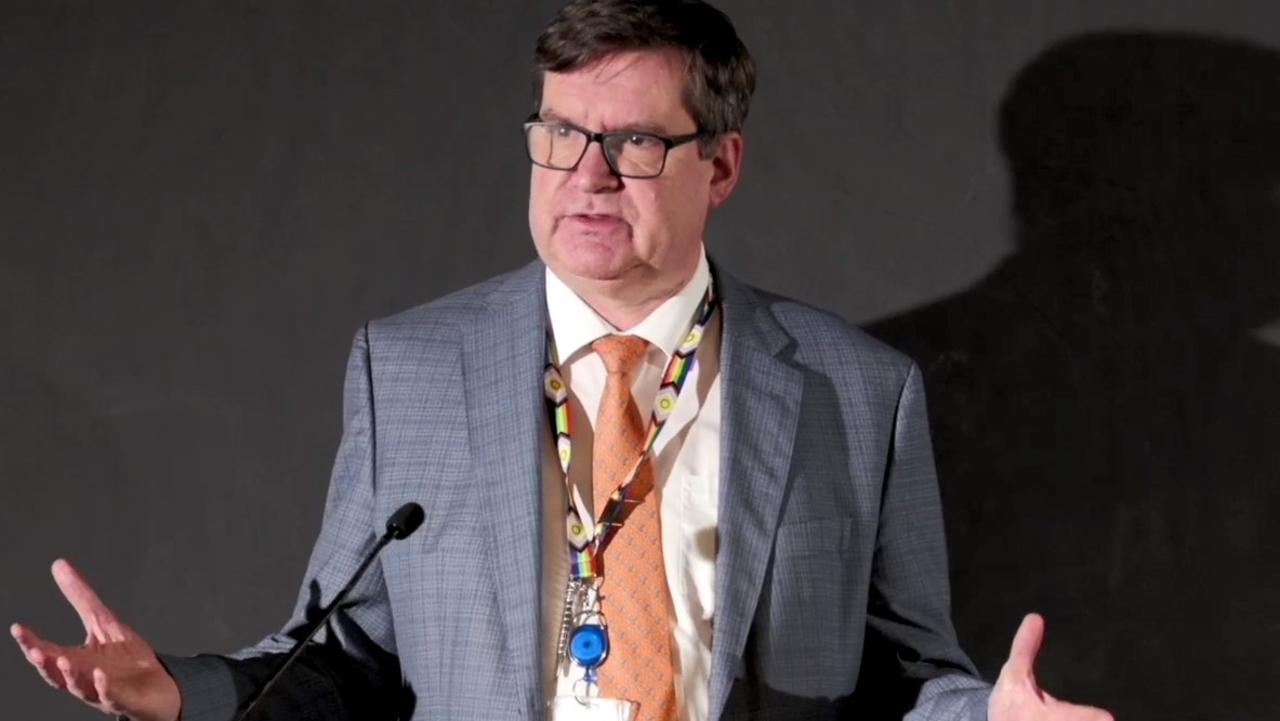1510 new cases, four deaths; Melbourne’s southeast now state’s new Covid epicentre
Covid infections are falling rapidly in former hotspots thanks to a huge surge in vaccination uptake, with the fully jabbed rate doubling in just a month.
Coronavirus
Don't miss out on the headlines from Coronavirus. Followed categories will be added to My News.
• This coronavirus article is unlocked and free to read in the interest of community health and safety. Tap here for our latest great value offer and instantly access trusted news from the Herald Sun and Leader.
Chief health officer Brett Sutton says coronavirus infections are falling rapidly in the former hot spots of Hume thanks to a huge growth in vaccination.
He said the local government area of Hume had the highest second dose growth of any council area over the past few weeks, increasing by 11.4 per cent.
“That’s reflected in what is happening with the numbers in Hume, with a decrease over the last week or two, it continues to decline and rapidly dropping below hundred cases per day,” Professor Sutton said.
“It now has a 70 per cent double-dose coverage, that’s up from 35 per cent just four weeks ago.
“It had the second highest first dose growth of 3.2 percentage points last week so continues to push on.”
It comes as Victoria recorded 1510 new cases and four deaths as the state inches closer to new freedoms.
A small vaccine milestone was reached, with three-quarters of eligible Victorians now fully vaccinated.
Currently, 817 Victorians are in hospital, 147 of whom are receiving intensive care. Eighty eight of those are on a ventilator.
But there was a dip in testing, with 55,679 results received on Monday.
It comes as new Covid cases in Hume municipality dropped to double figures for the first time in six weeks on Monday, as the northern outbreak continued to slow and vaccination rates grew.
The southeast has now overtaken Melbourne’s outer north as the outbreak epicentre, and was home to the only two municipalities that had triple-figure increases.
Greater Dandenong’s active cases jumped by 131 cases to more than 1800, while Casey had the biggest increase of 166, taking its total to 2617 active cases.
The number of active cases in Hume still hovers at more than 2100 but authorities were “delighted” to see the number of new daily cases fall to 96.
Victoria recorded 1461 new cases and seven deaths with Covid-19, as hospitals cared for more than 800 patients, including 152 in intensive care, 92 of whom are on ventilators.
MELBOURNE COVID CASES STABILISE
Professor Brett Sutton said Covid case numbers and trends in Melbourne were “pretty stable”.
He said Melbourne’s southeast, in the local government areas of Casey and Greater Dandenong, had the highest number of new cases on Tuesday with 169 and 140.
In regional Victoria, Latrobe had 41 new cases and Wodonga 36.
“Those are some areas with significant activity at the moment,” Prof Sutton said.
“As we open up further on Friday night, there will be more individuals who are infectious going to regional Victoria.”
But he said regional Victoria was protected.
“Regional Victoria has absolutely fantastic first dose coverage and is screaming along for second dose coverage,” he said.
“There is no LGA left behind in regional Victoria. They are all at or above 94 per cent (vaccination) coverage, the great majority of them above 95 per cent first those coverage.
“That is more equitable for a region in any other jurisdiction in Australia.”
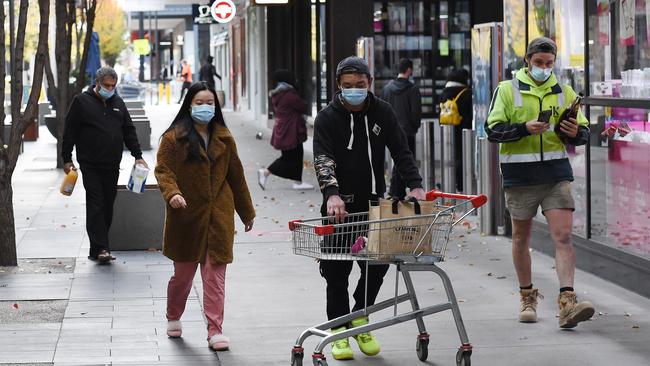
NINE IN 10 PATIENTS UNVAXXED
Almost nine in 10 Victorian coronavirus patients in hospital are not fully vaccinated, Premier Daniel Andrews revealed.
At least 817 Victorians are in hospital with Covid-19, with 147 of those in intensive care and 88 on a ventilator.
Mr Andrews said 87 per cent of those in hospital were not fully vaccinated.
“Of the people in intensive care, those who are sickest, 96 per cent of those people were not fully vaccinated,” he said.
“That is not a statistic, it is a story of people, but it tells you everything you need to know that if you are vaccinated, double dose protected, then your chances of finishing up in hospital really unwell is very small.”
VICTORIA SET TO TAKE REALLY ‘BIG STEP’
Daniel Andrews promised Victoria would take a “really big step” when more than 90 per cent of the population was fully vaccinated against coronavirus.
He said the changes would occur in a few weeks’ time where “so many of these rules will go”.
“We will be able to take that really big step, protected as we will be by then, more than nine in 10 people over the age of 12 will have been double dosed,” Mr Andrews said on Tuesday.
“We’ll be able to move into a very different phase … no density limits, one of the things we have had to live with, we won’t need to have those burdens any longer.”
More rules are set to ease in Victoria at 6pm on Friday after the state reaches 80 per cent fully vaccinated.
EMERGENCY POWER GRAB SLAMMED
Daniel Andrews would wield unprecedented power to declare pandemics and enforce emergency laws under legislation set to replace Victoria’s controversial state of emergency framework.
Under legislation going before parliament on Tuesday, the Premier would have the power to make a pandemic declaration following consultation with the chief health officer, and extend it in three-month blocks for as long as he considered it necessary.
The state’s chief health officer would be stripped of the ability to make special orders, with that power to be transferred to the health minister.
Read the full article here.
MELBURNIANS FLOCK TO CBD
Foot traffic in the CBD soared by up to 2000 per cent as Melburnians streamed into the city after the lockdown was lifted last Thursday night, Melbourne City Council figures show.
Lord Mayor Sally Capp said the city’s dining precincts experienced the biggest rise in activity.
“As lockdown ended on Thursday evening and celebrations began, we saw a 2000 per cent increase in foot traffic at our Southbank and Melbourne Central sensors shortly after midnight,” she said.
“Foot traffic on Lygon Street jumped 1200 per cent around the time for knock-off beers on Friday night, while Chinatown saw a 600 per cent increase at dinner time, compared to low figures forming a four-week average during lockdown.”
Other figures showed a:
• 1500 per cent increase at midnight on Thursday evening at the Town Hall sensor.
• 282 per cent increase at 8pm on Saturday at Flinders Street Station underpass.
• 200 per cent increase at 1pm on Saturday at Melbourne Central.
Ms Capp said: “Melburnians filled every seat in town to celebrate the end of lockdown over a well-deserved meal or round of drinks.”
City activation portfolio lead councillor Roshena Campbell said Melbourne’s hospitality industry had done it especially tough through six lockdowns and was finally undergoing a much-needed boost in city visitation.
“We know hospitality experiences play a key role in getting people back into the city. That’s why we are continuing to waive permit fees for outdoor dining,” she said.
WEEKEND SPENDING SPLURGE
Melburnians have reached for their wallets to celebrate the easing of lockdown with weekend spending surging by more than 20 per cent, customer data from National Australia Bank shows.
A cool $76.9m was sent through NAB merchant terminals from Friday to Sunday, up 21 per cent compared to last weekend but about 23 per cent below weekend spending in May when the city was lockdown-free and retailers were able to offer in-store shopping.
The biggest winners were hairdressers and beauty shops where spending was up 2430 per cent, followed by restaurants, bars and pubs where spending was up 94 per cent.
NAB business and private banking executive Andrew Irvine said spending was expected to remain strong right through the Christmas and New Year period.
“Small businesses are relishing every moment,” he said.
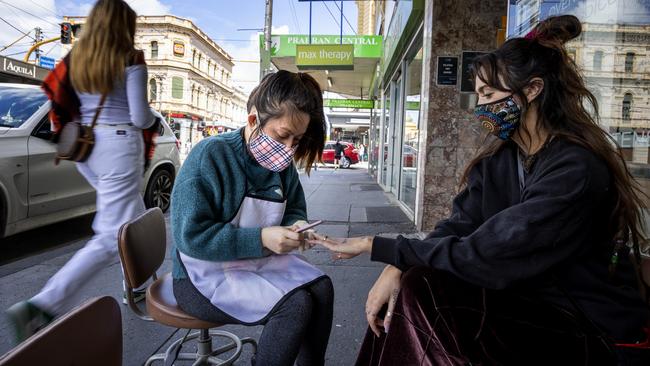

“Our customers and bankers are telling us they’re just warming up – the bounce back will be strong right through the holiday period and beyond.”
The early positive spending numbers come as retailers call on shoppers to back local business as bricks and mortar shops reopen in the lead-up to Christmas.
This is the “most critical time of the year” when retailers make up to two-thirds of their annual profits, Australian Retailers Association chief executive Paul Zahra said.
“We’re expecting it to be a strong trading period and our research shows that most people will be spending the same, or more, than they did on Christmas gifts this year compared to 2020,” Mr Zahra said.
Meanwhile, figures from the Australian Bureau of Statistics show online shopping surged during the most-recent lockdowns, with $4.2m spent nationally in August – more than double that spent in the same month in 2019.
PETS GET BACK TO WORK
Pets would return to the office with their owners in the coming months as part of a bold plan to address a predicted rise in separation anxiety post-lockdown.
Animal Justice Party MP Andy Meddick will on Tuesday launch a motion in parliament calling on the state government to prioritise pets in workplace-related policies.
Mr Meddick will also call for more workplaces, particularly office buildings including parliament, to be made pet friendly.
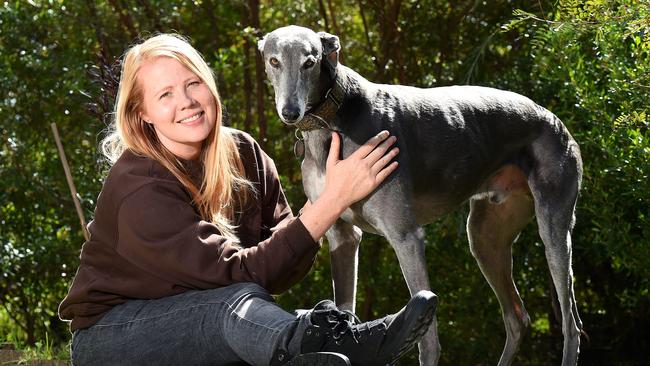
“The 262 days we spent in lockdown might have been some of our worst, but arguably they were some of the best for our companion animals,” he said.
As life returns to normal and workers return to the office after lockdown, animal behaviourists fear pets could become stressed and experience forms of separation anxiety.
North Melbourne office worker Kim Oxley said she couldn’t imagine working for an employer who didn’t allow her to bring her greyhound Blue into work each day.
“It’s so important for dogs to live their lives with us, and not just be relegated to the backyard,” she said.
POLICE ‘WON’T CHECK VACCINE PASSES’
One of Victoria’s top Covid cops says police will not check vaccine passes at restaurants, bars and shops because it is not their responsibility.
Covid response commander Tim Tully said vaccine checks were “certainly something that Victoria Police won’t be doing”.
“That’s the responsibility of the owners,” he told 3AW.
“It’s not our responsibility … that’s not a role for us at all.”
Commander Tully said they were still working through whether police had authority to demand a customers’ vaccination passport if police were called to a dispute. But he said “there are still CHO directions in place that we are enforcing”.
“Our approach hasn’t changed,” he said. “We’re asking our members to use their discretion.
“Blatant and obvious deliberate breaches, we’ll certainly be enforcing them.”
Despite viral footage of rowdy Friday night Chapel St crowds — which police are investigating — Commander Tully said people were generally well-behaved across Melbourne.
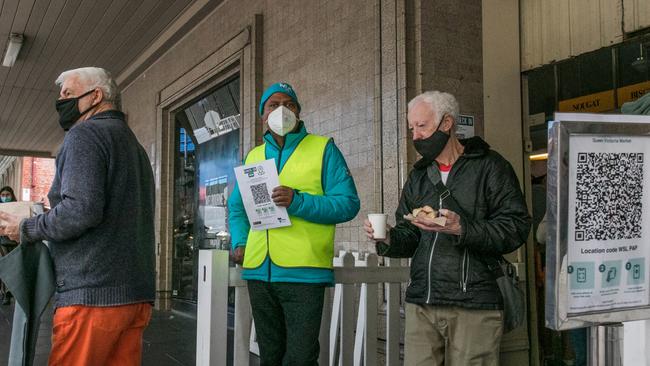
HOUSING AFFORDABILITY COLLAPSES
Housing affordability continues to collapse across Melbourne, as property prices exceed stagnant wages, exacerbated by the pandemic.
Analysis released by Moody’s Investors Service on Monday said Melbourne’s median house price is now more than $960,000, climbing 16.2 per cent since January 1.
Melbourne households now spend an average of 32.1 per cent of their incomes on mortgage repayments — an increase from 29.7 per cent in February.
Despite record low interest rates, housing affordability will continue to worsen in Melbourne as property prices soar and wage growth stagnates, raising concerns about financial stability risks and household debt.
“Australian housing affordability, which deteriorated over the seven months to September 2021, will continue to worsen over the rest of the year and into early 2022,” said Moody’s analysts Pratik Joshi and Ilya Serov.


